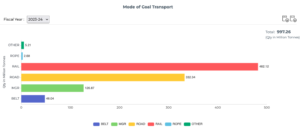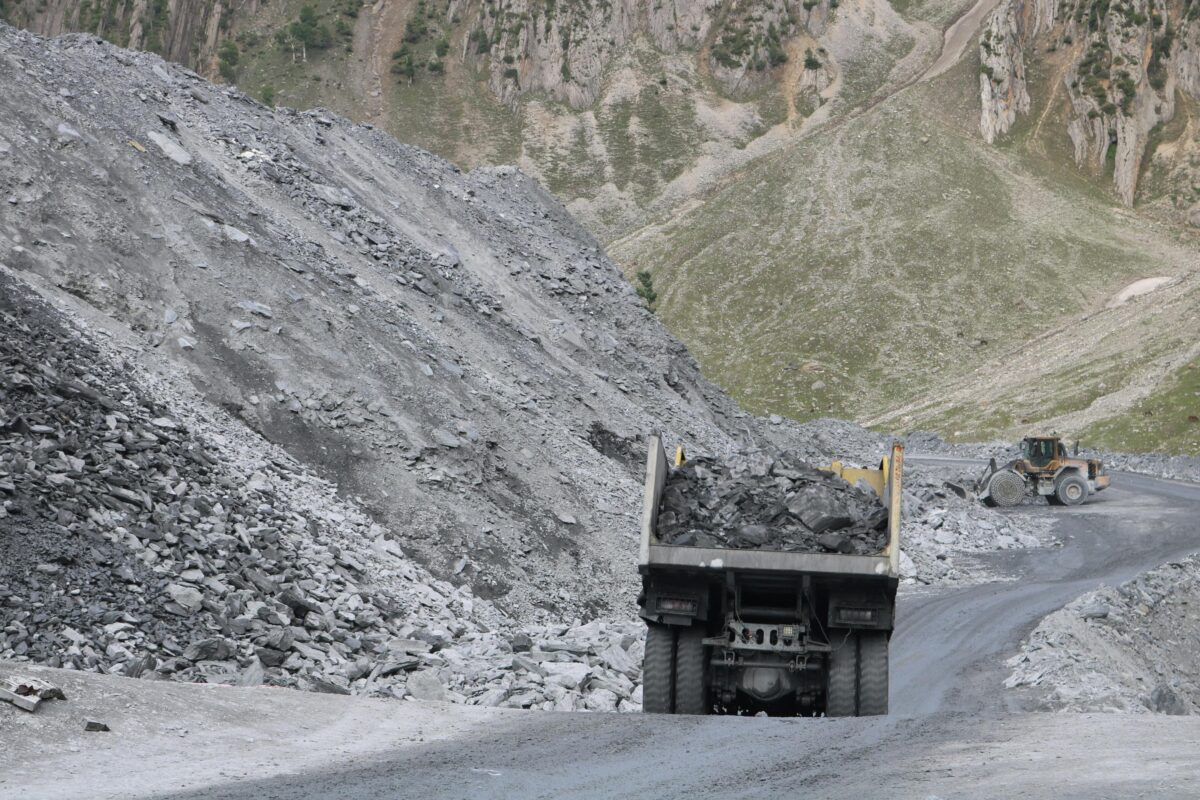India has one of the largest coal reserves in the world. We are at number five globally, after the United States, Russia, Australia and China. And much of these reserves are found inland, in the regions of Chhattisgarh, Jharkhand, parts of Madhya Pradesh and Odisha.
This coal makes its way to power plants, factories and industries all across India. This transport of coal from the mines to their destinations comprise “coal logistics”. A big chunk of India’s energy supply is met via thermal power plants that run on coal, and coal logistics has been a challenge, especially during the summer months when there is an increase in demand for both coal and electricity generation.
So how exactly does all this coal move from the mines to the destination points? What modes of transport are used? How much does it cost? And what are the challenges? These are a few questions we’ll be examining below.
The numbers: How much coal is transported?
As per data from the Coal Ministry, India produced a record high of 1,039.59 million tonnes (MT) of coal in 2024, registering a 7.28% increase from the previous year’s 969.07 MT.
Coal India Limited states that they loaded 292.2 rakes per day during FY 2024, versus 273.6 rakes per day of FY23. A rake, in rail transport, refers to coupled freight wagons that move together as a single unit and one rake rake load of coal is approximately 4000 tonnes.
While railways are the major transporters of coal, roads are also used to transport coal (over and above what is transported by train), contributing to roughly26% of coal transported.
(A quick note on the freight rates for trucks. According to data from the Centre of Monitoring of Indian Economy, in March 2024, the cost of transporting goods using a 15-tonne truck stood at INR 96.3 per km from Delhi to Chennai, and INR 42.9 per km from Delhi to Kolkata.)
The means: How coal is transported
In India, coal is primarily transported from the source/mines to thermal power plants for electricity generation. There are several ways in which coal gets from the mines to its destination.
- Rail: Network of railways
- Road: Roads and highways
- MGR: Merry-Go-Round, or a dedicated rail network that moves coal from mines to power plants; a kind of closed-circuit rail transport system between production and consumption points
- Belt: Conveyor belts
- Rope: A haulage system that utilises strong wire ropes to pull mine cars along underground or surface tracks to transport coal (in underground mines and captive mines).

The Indian Climate and Energy Dashboard (ICED) has given a breakup of coal transport for the year 2023-24. Out of a total of 997 million tonnes transported, rail constitutes about half of it, followed by roadways and MGR. Railways and roadways are the biggest modes of coal transport in India, with a difference of roughly 150 million tonnes between them.
The cost: Why transporting coal is a mammoth task
A majority of India’s coal mines are found inland, in Eastern and South-Central India: in Odisha, Jharkhand, Chattisgarh, Madhya Pradesh and West Bengal. Among the biggest consumers of this coal are India’s thermal power plants. While not all, many of India’s thermal power plants — particularly in the southern and western regions — are strategically located near the coast, close to ports. This allows for easier coal transportation and access to seawater for cooling during the electricity generation process.
If we look at the unit economics of transporting coal, rail is by far the cheaper option. Data from the coal ministry’s 2022 draft coal logistics policy shows that the freight by rail cost comes to Rs 1.86 per tonne kilometre. (Tonne kilometre measures the movement of one metric tonne of goods over a distance of one kilometre.) Road, on the other hand, costs Rs. 2.50 per tonne kilometre. And if we compare the emissions, roadways have a much higher emission of 62 gCO₂/tonne-km (grams of carbon dioxide per tonne-kilometre), compared to rail at 22 gCO₂/tonne-km.
The roadmap: Coal Logistics Policy and Plan
To make the transport of this essential raw material more cost-effective and to reduce emissions, the government put forth the Coal Logistics Policy and Plan in February 2024. The government’s aim is to cut down overall logistics costs by reducing the share of coal transported by road and increasing rail-based coal transportation.
The press release lists the objectives as the plan, focusing on:
- Availability and ensuring that there is adequate coal loading and evacuation infrastructure at nearby locations
- Optimization of the overall coal logistics cost
- Integration via an interconnected network and greener transportation for coal logistics
- Modernization of coal logistics through the use of information communication technology, AI, drones, sensors etc
- Efficient and faster loading and transportation of coal
- Inclusivity and addressing the needs of all stakeholders from the logistics supply and user side.
The plan focuses on transitioning to a railway-based system for first-mile connectivity (FMC) projects, targeting a 14% reduction in rail logistics costs and saving ₹21,000 crore annually. The Coal Ministry understands that an efficient logistics system is the need of the hour to keep up with India’s rising energy demand, which is expected to grow from 980 million tonnes to 1.5 billion tonnes by 2030.
So what does the Coal Logistics Policy and Plan signal for the biggest transporters, the rail and road sector? Who stands to benefit? What will the impact be on related sectors like infrastructure and logistics? We will examine this in part 2.
Sources
https://www.cag.org.in/newsletters/public-newsense/sagarmala-and-thermal-power-plants
https://pib.gov.in/PressReleasePage.aspx?PRID=1884810
https://iced.niti.gov.in/energy/fuel-sources/coal/transport

